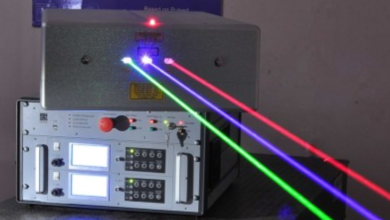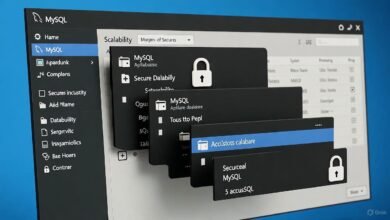
Best Rainbow Six Siege Settings for FPS Boost and Competitive Edge in 2025
If you’ve ever lost a gunfight in Rainbow Six Siege by milliseconds and thought, “Was that lag… or just me?”—you’re not alone. Rainbow Six Siege is a pretty tactical game, and every frame, footstep, and flick counts while playing it.
And no, I am not just talking about having a $3,000 rig or a 240Hz monitor.
Sometimes, it’s as simple as tweaking your settings the right way.
Whether you’re grinding ranked or just trying to stop rage-quitting every other match, these settings can help you squeeze out extra frames and improve your overall performance without turning the game into a pixelated mess.
Do you want to know exactly how to do it? Yes? Great, let’s talk about that in detail.
Why Your Settings Matter in Rainbow Six Siege
Call of Duty and Apex Legends are reflex-heavy shooting games, but Siege is different. Siege rewards patience, map knowledge, and intel gathering. But that doesn’t mean settings don’t matter; they might matter more here.
Good settings I personally use in Siege:
- Boost FPS for smoother aiming
- Reduce visual clutter so you spot enemies faster
- Cut input lag for tighter movement
- Improve audio clarity for footsteps and gadget sounds
So, if you’re still using the default setup, it’s time for an upgrade. Let me help you fine-tune your game and improve its performance.
See also: 5 Common Heating Issues Coral Springs Technicians Fix Every Winter
Best Display Settings for FPS Boost (PC)
Let’s start with the basics: your display settings.
Display Mode: Fullscreen (gives best performance)
Resolution: Native monitor resolution (1080p is best for FPS-to-visibility ratio)
Refresh Rate: Match your monitor (like 144Hz or 240Hz)
V-Sync: OFF (introduces input lag)
Aspect Ratio: 4:3 Stretched (it is optional, but gives larger character models for some players)
Pro tip: To avoid messing with clarity and to avoid frame inconsistencies, turn OFF Dynamic Resolution Scaling and keep Render Scaling at 100%.
Graphics Settings Breakdown
Most Siege pros don’t care how pretty Siege looks—they care how well it runs. Here’s how I balance visuals and performance and you can copy:
| Setting | Recommendation | Why? |
|---|---|---|
| Texture Quality | Medium | Better clarity without overloading the GPU |
| Shadow Quality | Low or Off | Huge FPS boost, minimal gameplay loss |
| Level of Detail (LOD) | Medium | Keeps distance visibility decent |
| Shading Quality | Low | Frees up GPU resources |
| Reflection Quality | Low | Barely noticeable, big performance gain |
| Ambient Occlusion | Off | Pure eye candy—turn it off |
| Lens Effects | Off | No one needs fake sun glare in a gunfight |
| Anti-Aliasing | T-AA (or Off) | Optional—T-AA for smoother edges if your GPU can handle it |
If you’re on a lower-end setup, decrease everything to Low or Off, except texture quality (Medium helps with enemy visibility). Moreover, these settings won’t help when you have a struggling internet connection. I use Xfinity Internet, and I am satisfied. It is one of the best ISPs in the US because of its bilingual Xfinity servicio al cliente, affordable plans, and network stability.
Control Settings for Faster Reactions
Flicks, peeks, and headshots all start with your sensitivity settings and bad ones can ruin your aim completely. So, avoid them:
Mouse (PC):
DPI: 400–800 is ideal (find your sweet spot)
Horizontal/Vertical Sensitivity: 8–15 (adjust according to your playstyle)
ADS Sens Multiplier: 0.02–0.03 (makes aiming more precise)
Mouse Acceleration: OFF (always off)
Track your consistency with aim trainers like Kovaak’s or Aim Lab, you’ll start to notice smoother aim patterns with stable settings.
Controller (Console):
Look Sensitivity: Start at 40–60
ADS Sensitivity: Slightly lower than look (like 35–50)
Dead Zones: As low as possible without stick drift
Response Curve: Classic or Linear for the consistent aim
Console players should focus on building muscle memory and avoid over-tweaking between matches as it messes with consistency.
HUD and Audio Tweaks for Better Awareness
Sometimes, less is more, especially when it comes to Siege’s HUD.
HUD Tips:
- Turn off any unnecessary on-screen elements (like crosshair fade or compass).
- Keep damage indicators and pings visible—they’re critical.
- Adjust reticle colors for visibility against darker maps.
Audio Tweaks:
Dynamic Range: Night Mode or Hi-Fi (better for footsteps)
Voice Chat Volume: 70–100 (communication wins games)
Master Volume: 80–100 (but tweak depending on headset)
Footsteps, reloads, and gadget cues are how Siege communicates with you, so don’t drown them out with background music or explosions.
Bonus: Pro Settings to Steal (2025 Edition)
Let me conclude this topic by giving you some bonus tips that I rarely give out.
Want to copy what the best are using? These are some of the most effective setups from top players this year:
Shaiiko (Team BDS)
DPI: 800
In-Game Sens: 12 / 12 (0.02 ADS)
Graphics: Low across the board, medium textures
Canadian (Retired but legendary)
Uses low everything, max contrast for visibility
Plays on native 1080p, fullscreen, stretched aspect
Check out ProSettings.net or the Siege subreddit’s monthly settings thread to find more examples and customize from there.




